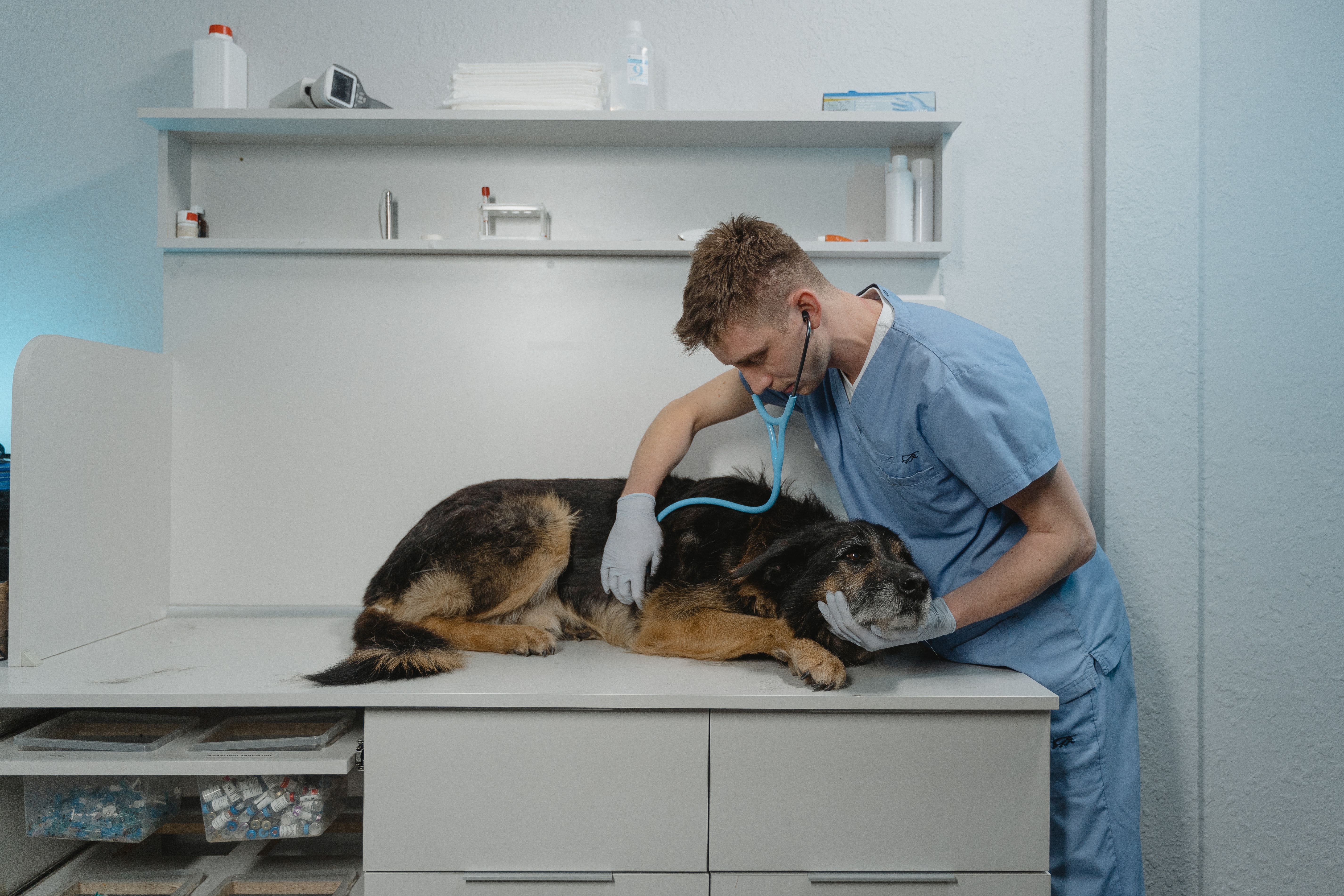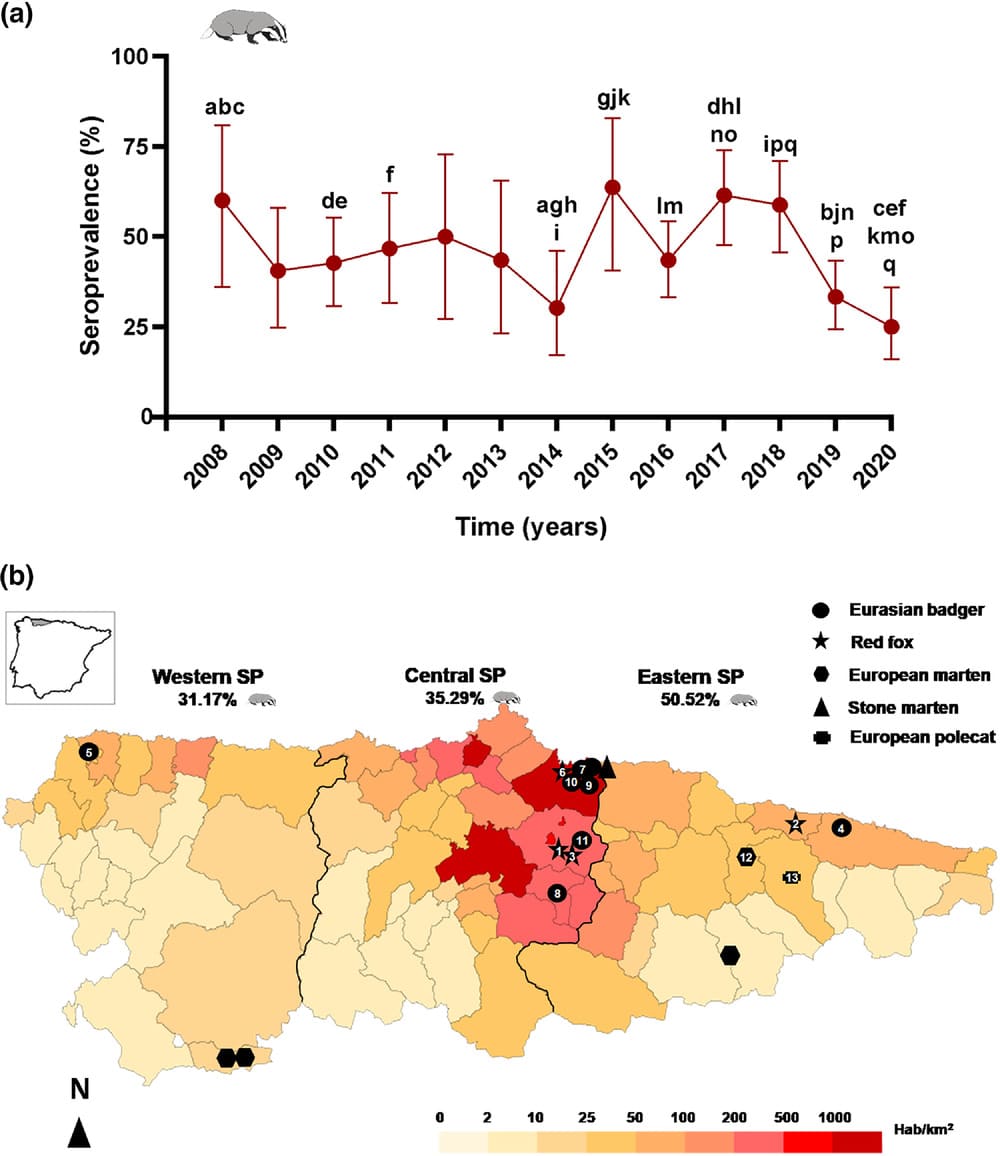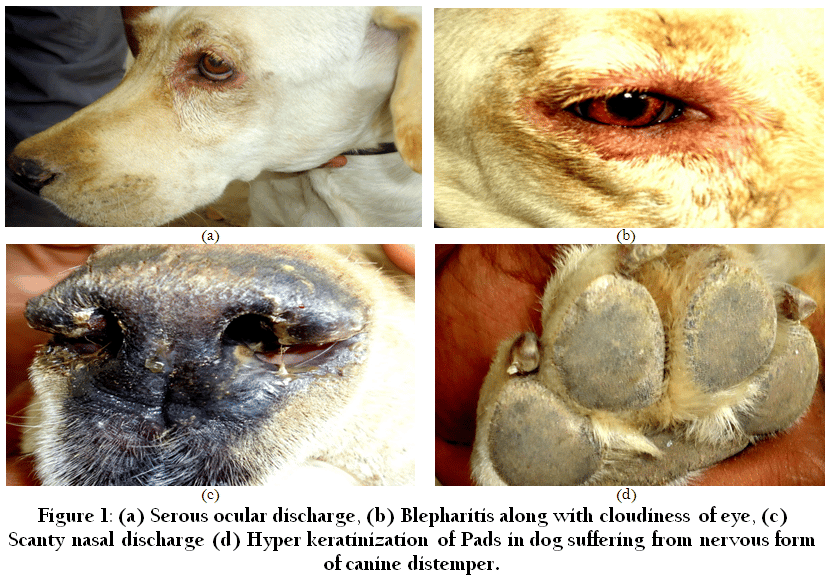
Hälsa
Should dogs be vaccinated against Canine Distemper?
Recent debates about the safety of vaccines have many animal parents questioning whether their dogs should be vaccinated. The simple answer is absolutely!
Animals should receive core vaccines, which are absolutely necessary for all pets, and may require additional vaccines based on their lifestyle.
Little if any medicine is without risk, but the benefits of immunizing pets certainly overtake the few risks since many prevalent vaccinations in pets protect against life-threatening diseases like rabies.
Immunizations not only save animals but also help to prevent human illness.
Veterinarians immunize their canine patients against the canine parvovirus and the canine distemper virus. Distemper and parvovirus vaccinations are essential since these infections can be fatal.
Because transmission does not need to occur directly with another dog, indoor-only dogs who are not properly vaccinated risk exposure and illness.
These resilient viruses can be carried inside the house on non-living items like clothing or shoes. Indoor-only dogs who are not properly immunized can be exposed since spreading doesn't really involve direct interaction with another dog.
Hälsa
Should dogs be vaccinated against Canine Distemper?
Recent debates about the safety of vaccines have many animal parents questioning whether their dogs should be vaccinated. The simple answer is absolutely! Animals should receive core vaccines, which are absolutely necessary for all pets, and may require additional vaccines based on their lifestyle.
Little if any medicine is without risk, but the benefits of immunizing pets certainly overtake the few risks since many prevalent vaccinations in pets protect against life-threatening diseases like rabies. Immunizations not only save animals but also help to prevent human illness.
Veterinarians immunize their canine patients against the canine parvovirus and the canine distemper virus. Distemper and parvovirus vaccinations are essential since these infections can be fatal.
Because transmission does not need to occur directly with another dog, indoor-only dogs who are not properly vaccinated risk exposure and illness.
These resilient viruses can be carried inside the house on non-living items like clothing or shoes. Indoor-only dogs who are not properly immunized can be exposed since spreading doesn't really involve direct interaction with another dog.

Swedish Kennel Club (Svenska Kennelklubben)- recommends Canine Distemper vaccination
The triple vaccine ( Canine Distemper ,Parvovirus and Infectious Canine Hepatitis) must be administered at 8 weeks, 12 weeks, and 12 months of age.
Svenska Kennelklubben (SKK) recommends routine vaccinations every four years after that. It is critical that you clean up after your dog to avoid the spread of parvovirus.
For the most up-to-date vaccination information, contact the Swedish Board of Agriculture (www.sjv.se) or the country's embassy before traveling abroad.
Swedish Kennel Club (Svenska Kennelklubben)- recommends Canine Distemper vaccination
The triple vaccine ( Canine Distemper ,Parvovirus and Infectious Canine Hepatitis) must be administered at 8 weeks, 12 weeks, and 12 months of age. Svenska Kennelklubben (SKK) recommends routine vaccinations every four years after that. It is critical that you clean up after your dog to avoid the spread of parvovirus.
For the most up-to-date vaccination information, contact the Swedish Board of Agriculture (www.sjv.se) or the country's embassy before traveling abroad.

It is extremely crucial for dogs who reside in urban areas and interact with many other dogs to have adequate vaccination protection.
All puppies should receive a triple vaccine against parvovirus, canine distemper, and infectious canine hepatitis (HCC).
At the same time, puppies can be immunized against kennel cough.
As several dogs come in contact, the risk of kennel cough increases.
Always remain vigilant about your dog's health and take note of any changes. If he/she begins to cough, keep him/her isolated from other dogs to avoid infection spread. For more information, speak with your veterinarian.
It is extremely crucial for dogs who reside in urban areas and interact with many other dogs to have adequate vaccination protection. All puppies should receive a triple vaccine against parvovirus, canine distemper, and infectious canine hepatitis (HCC). At the same time, puppies can be immunized against kennel cough.
As several dogs come in contact, the risk of kennel cough increases. Always remain vigilant about your dog's health and take note of any changes. If he/she begins to cough, keep him/her isolated from other dogs to avoid infection spread. For more information, speak with your veterinarian.
Side effects of Canine Distemper vaccine
Side effects of Canine Distemper vaccine
In order to function, vaccines only slightly stimulate the immune system. The majority of dogs exhibit no adverse reactions from vaccination, although probable adverse reactions of the Distemper vaccine in dogs could vary from pain to moderate fever. Allergic reactions, which can include facial swelling, vomiting, diarrhea, lack of appetite, and fever, can occasionally happen.
The majority of side effects from puppy injections are temporary and moderate, but in just a few rare instances, more serious responses requiring rapid medical intervention can happen.
After receiving the vaccine, symptoms of a severe reaction typically show up very quickly, but they can appear even after 48 hours. Dog vaccination adverse reactions that are more serious include breathing difficulty, facial swelling, vomiting, rashes, itching, and diarrhea.
The most serious allergic response that can occur after a vaccine in a pet is anaphylaxis. It's vital to keep in mind that anaphylaxis might occur 48 hours after immunization. Anaphylaxis often happens in dogs fairly quickly after the administration of the vaccine.
Vaccinations are a crucial component of maintaining the general health of your dog. A major adverse response to a vaccine in your pet is extremely unlikely.
When numerous vaccinations are administered at once to smaller dogs, the chance of an adverse reaction to the shots increases. Your veterinarian might advise spreading out your puppy's vaccinations over a few days instead of all at once if it is a little or miniature breed dog.

In order to function, vaccines only slightly stimulate the immune system. The majority of dogs exhibit no adverse reactions from vaccination, although probable adverse reactions of the Distemper vaccine in dogs could vary from pain to moderate fever. Allergic reactions, which can include facial swelling, vomiting, diarrhea, lack of appetite, and fever, can occasionally happen.
The majority of side effects from puppy injections are temporary and moderate, but in just a few rare instances, more serious responses requiring rapid medical intervention can happen.
After receiving the vaccine, symptoms of a severe reaction typically show up very quickly, but they can appear even after 48 hours. Dog vaccination adverse reactions that are more serious include breathing difficulty, facial swelling, vomiting, rashes, itching, and diarrhea.
The most serious allergic response that can occur after a vaccine in a pet is anaphylaxis. It's vital to keep in mind that anaphylaxis might occur 48 hours after immunization. Anaphylaxis often happens in dogs fairly quickly after the administration of the vaccine.
Vaccinations are a crucial component of maintaining the general health of your dog. A major adverse response to a vaccine in your pet is extremely unlikely.
When numerous vaccinations are administered at once to smaller dogs, the chance of an adverse reaction to the shots increases. Your veterinarian might advise spreading out your puppy's vaccinations over a few days instead of all at once if it is a little or miniature breed dog.
What is Canine Distemper?
Canine Distemper Virus was among the most frequently fatal diseases in dogs until the late twentieth century.
This viral infection affects both your dog's internal organs and nervous system.
In addition to extreme brain and spinal cord damage, the dog's eyes, along with their dentition, are affected if the disease is caught before the initial tooth change.
Since the introduction of mandatory distemper vaccination, these cases have become an exception.

What is Canine Distemper?
Canine Distemper Virus was among the most frequently fatal diseases in dogs until the late twentieth century. This viral infection affects both your dog's internal organs and nervous system. In addition to extreme brain and spinal cord damage, the dog's eyes, along with their dentition, are affected if the disease is caught before the initial tooth change. Since the introduction of mandatory distemper vaccination, these cases have become an exception.
How is it spread?
Puppies and dogs are most commonly infected by the virus from a highly contagious dog or wild animal through airborne exposure (sneezing or coughing).
The pathogen can also be spread through common food and water bowls, as well as equipment. Infected dogs can spread the pathogen for months, and mother dogs can transmit the virus to their puppies through the placenta.
Because canine distemper affects wildlife, interaction among animals in the wild and domestic dogs can help the virus spread.
How is it spread?
Puppies and dogs are most commonly infected by the virus from a highly contagious dog or wild animal through airborne exposure (sneezing or coughing).
The pathogen can also be spread through common food and water bowls, as well as equipment. Infected dogs can spread the pathogen for months, and mother dogs can transmit the virus to their puppies through the placenta.
Because canine distemper affects wildlife, interaction among animals in the wild and domestic dogs can help the virus spread.
Pets help with school anxiety
An American research of children aged 4 to 10 years old found that having a pet helps lessen anxiety in little children about going to school, being alone in the house, being extremely timid, and being scared for no apparent reason.
At the same time, a Croatian experiment (on war-traumatized youngsters) found no difference in self-esteem between children who had housepets and those who do not.
The spreading of CDV
The spreading of CDV around the world in non-dog species (wildlife).Countries are represented by the star symbol.

The spreading of CDV
The spreading of CDV around the world in non-dog species (wildlife).Countries are represented by the star symbol.
Pets help with school anxiety
An American research of children aged 4 to 10 years old found that having a pet helps lessen anxiety in little children about going to school, being alone in the house, being extremely timid, and being scared for no apparent reason.
At the same time, a Croatian experiment (on war-traumatized youngsters) found no difference in self-esteem between children who had housepets and those who do not.


Viral infections that affect both wild animals and domesticated animals are constantly spreading to new regions due to human activity and environmental change.
Out of the 684 badgers involved in the serological study, 297 (43.4%) tested positive for CDV by ELISA (A method for analyzing IgG antibodies against the canine distemper virus (CDV) (dog) in plasma or serum ).
Between 2020 and 2015, the mean yearly seroprevalence fluctuated from 25% to 63.64%.
Geographical differences in the seropositivity rate can be seen in the figure.
For example, 24 of 77 (31.2%) badgers from the Western region were positive, compared to 78 of 221 (35.3%) from the Central area and 195 of 386 (50.5%) from the Eastern region.
Male seropositivity rates were 41.2% (124/301) and female seropositivity rates were 41.8% (135/323) respectively.
Seropositivity rates for adults were 42.7% (197/461) and for subadults were 38.0% (62/163).

Viral infections that affect both wild animals and domesticated animals are constantly spreading to new regions due to human activity and environmental change.
Out of the 684 badgers involved in the serological study, 297 (43.4%) tested positive for CDV by ELISA (A method for analyzing IgG antibodies against the canine distemper virus (CDV) (dog) in plasma or serum ).
Between 2020 and 2015, the mean yearly seroprevalence fluctuated from 25% to 63.64%.
Geographical differences in the seropositivity rate can be seen in the figure.
For example, 24 of 77 (31.2%) badgers from the Western region were positive, compared to 78 of 221 (35.3%) from the Central area and 195 of 386 (50.5%) from the Eastern region.
Male seropositivity rates were 41.2% (124/301) and female seropositivity rates were 41.8% (135/323) respectively.
Seropositivity rates for adults were 42.7% (197/461) and for subadults were 38.0% (62/163).
Symptoms
All dogs are at risk of contracting the disease, but puppies under four months old and unvaccinated dogs are more vulnerable (there is an increased risk for them getting it).
Infected dogs will initially experience watery to pus-like discharge from their eyes.
Fever, nasal discharge, coughing, extreme fatigue, appetite loss, and vomiting follow. Infected dogs exhibit circling behavior, head shake, muscle spasms, seizures with jaw-nibbling movements and salivation, convulsions, and complete or partial paralysis as the virus infects the nervous system.
The virus may also cause footpads to thicken and harden, giving rise to the term "hard pad disease."
Canine distemper infection in wildlife is very similar to rabies.
Distemper is frequently fatal, and dogs who survive usually suffer permanent, irreversible nervous system damage.

Symptoms
All dogs are at risk of contracting the disease, but puppies under four months old and unvaccinated dogs are more vulnerable (there is an increased risk of them getting it).
Infected dogs will initially experience watery to pus-like discharge from their eyes. Fever, nasal discharge, coughing, extreme fatigue, appetite loss, and vomiting follow. Infected dogs exhibit circling behavior, head shake, muscle spasms, seizures with jaw-nibbling movements and salivation, convulsions, and complete or partial paralysis as the virus infects the nervous system. The virus may also cause footpads to thicken and harden, giving rise to the term "hard pad disease."
Canine distemper infection in wildlife is very similar to rabies.
Distemper is frequently fatal, and dogs who survive usually suffer permanent, irreversible nervous system damage.

How is it diagnosed and treated?
Canine distemper is diagnosed by veterinarians based on clinical signs and laboratory testing.
Canine distemper infection has no cure. Supportive care and measures to avoid secondary infections, control vomiting, diarrhea, and neurologic symptoms, and fight dehydration through fluid administration are typical treatments.
Canine distemper infected dogs must be kept separate from other animals to decrease the chance of further illness.

Canine distemper is diagnosed by veterinarians based on clinical signs and laboratory testing.
Canine distemper infection has no cure. Supportive care and measures to avoid secondary infections, control vomiting, diarrhea, and neurologic symptoms, and fight dehydration through fluid administration are typical treatments.
Canine distemper infected dogs must be kept separate from other animals to decrease the chance of further illness.
How is it diagnosed and treated?
Preventive measures
The puppies are given a series of vaccines to build up their immune system.
Avoid gaps in the immunization and make sure your puppy is up to date with her/his vaccines.
Avoid contact with infected animals (including wild ones).
Use caution when socializing the puppy or unvaccinated dogs around dog parks, puppy classes, doggy daycare, and any other places you might visit with your dog and there are other dogs present.

Preventive Measures
The puppies are given a series of vaccines to build up their immune system.
Avoid gaps in the immunization and make sure your puppy is up to date with her/his vaccines.
Avoid contact with infected animals (including wild ones).
Use caution when socializing the puppy or unvaccinated dogs around dog parks, puppy classes, doggy daycare, and any other places you might visit with your dog and there are other dogs present.

Long-term conditions after the virus survival

A dog that recovers from distemper will always exhibit both non-life-threatening and life-threatening symptoms.
Hard pad disease, which causes the skin on the paw pads and the tip of the nose to harden, is the most frequent non-life-threatening symptom.
Enamel hypoplasia is another typical long-lasting symptom.
The enamel of teeth that are not fully developed or that have not yet erupted through the gums is especially vulnerable in puppies.
This happens as a result of the virus destroying the cells that produce tooth enamel. These teeth have the potential to decay quickly.
Typically, nervous system degenerative symptoms are among the most serious ones.
Distemper-infected dogs frequently experience a gradual decline in their mental and physical ability.
The dog may eventually experience increasingly severe seizures, paralysis, vision loss, and incoordination. Due to the extreme hardship these dogs endure, they are typically euthanized mercifully.
Additional information about the Canine Distemper Virus
Canine Distemper Virus is a viral disease that affects a large variety of mammals (felines, coyotes, pandas, foxes, wolves, some primates, domestic and wild dogs), including other species, but it doesn't transmit to humans.
The viral infection might eventually result in significant neurological symptoms and be followed by subsequent bacterial infections.
Via inhalation, the illness is extremely contagious.
Animal mortality and morbidity can vary widely by species, with populations of ferrets who have not received vaccinations experiencing up to 100% mortality.
Although the severe widespread form of distemper in domestic dogs has a high fatality rate, the length and severity of the illness are primarily influenced by the animal's age, immunological health, and the virulence of the virus that is causing it.

Long-term conditions after the virus survival
A dog that recovers from distemper will always exhibit both non-life-threatening and life-threatening symptoms. Hard pad disease, which causes the skin on the paw pads and the tip of the nose to harden, is the most frequent non-life-threatening symptom. Enamel hypoplasia is another typical long-lasting symptom.
The enamel of teeth that are not fully developed or that have not yet erupted through the gums is especially vulnerable in puppies. This happens as a result of the virus destroying the cells that produce tooth enamel. These teeth have the potential to decay quickly.
Typically, nervous system degenerative symptoms are among the most serious ones.
Distemper-infected dogs frequently experience a gradual decline in their mental and physical ability. The dog may eventually experience increasingly severe seizures, paralysis, vision loss, and incoordination. Due to the extreme hardship these dogs endure, they are typically euthanized mercifully.
Additional information about the Canine Distemper Virus
Canine Distemper Virus is a viral disease that affects a large variety of mammals (felines, coyotes, pandas, foxes, wolves, some primates, domestic and wild dogs), including other species, but it doesn't transmit to humans.
The viral infection might eventually result in significant neurological symptoms and be followed by subsequent bacterial infections.
Via inhalation, the illness is extremely contagious. Animal mortality and morbidity can vary widely by species, with populations of ferrets who have not received vaccinations experiencing up to 100% mortality.
Although the severe widespread form of distemper in domestic dogs has a high fatality rate, the length and severity of the illness are primarily influenced by the animal's age, immunological health, and the virulence of the virus that is causing it.
Mechanism and diagnosis
Nearly all bodily systems are impacted by the canine distemper virus.
Puppies between three and six months old are especially vulnerable. Six to 22 days after exposure, CDV spreads by aerosol droplets and through contact with bodily fluids containing the virus, such as nasal and ocular secretions, feces, and urine.
Food and drink infected with these fluids can potentially spread it.
There are 14 to 18 days between an infection and a sickness, while a fever might start 3 to 6 days after infection.
The preceding symptoms, particularly fever, respiratory and neurological symptoms, thicker footpads, and other indicators that appear in uninfected dogs, strongly suggest CDV.
However, a number of febrile illnesses mimic many of the symptoms of the illness, and it has only lately become able to tell canine hepatitis, herpes virus, parainfluenza, and leptospirosis apart.

Mechanism and diagnosis
Nearly all bodily systems are impacted by the canine distemper virus. Puppies between three and six months old are especially vulnerable. Six to 22 days after exposure, CDV spreads by aerosol droplets and through contact with bodily fluids containing the virus, such as nasal and ocular secretions, feces, and urine. Food and drink infected with these fluids can potentially spread it. There are 14 to 18 days between an infection and a sickness, while a fever might start 3 to 6 days after infection.
The preceding symptoms, particularly fever, respiratory and neurological symptoms, thicker footpads, and other indicators that appear in uninfected dogs, strongly suggest CDV. However, a number of febrile illnesses mimic many of the symptoms of the illness, and it has only lately become able to tell canine hepatitis, herpes virus, parainfluenza, and leptospirosis apart.

The history of the disease
The first case of CDV was documented in Europe in Spain in 1761. French veterinarian Henri Carré discovered in 1905 that the illness was brought on by a virus after Edward Jenner first described it in 1809.
Prior to Patrick Laidlaw and G.W. Dunkin confirming that a virus was in fact the disease's cause in 1926, Carré's results were contested by scientists in England.
Vittorio Puntoni, an Italian, created the first canine distemper vaccination.
Puntoni wrote two studies in 1923 and 1924 in which he used formalin to preserve sick dog brain tissue to make a vaccine that effectively warded off the illness in healthy dogs.
Despite the fact that a commercial vaccination was created in 1950, the virus is still widespread in many areas due to its insufficient use.
The domestic dog has been spreading the virus to other species of animals (that haven't been exposed previously ) that were actually on the verge of extinction because of it (black-footed ferret).
Carnivore species, marsupial species, and African wild dogs-each one of them has been affected by the virus and could barely survive the extinction.
The lion population in Tanzania declined by 20% in 1991, also the virus mutated so it became a deadly disease for seals (phocid distemper virus).

The history of the disease
The first case of CDV was documented in Europe in Spain in 1761. French veterinarian Henri Carré discovered in 1905 that the illness was brought on by a virus after Edward Jenner first described it in 1809. Prior to Patrick Laidlaw and G.W. Dunkin confirming that a virus was in fact the disease's cause in 1926, Carré's results were contested by scientists in England.
Vittorio Puntoni, an Italian, created the first canine distemper vaccination.
Puntoni wrote two studies in 1923 and 1924 in which he used formalin to preserve sick dog brain tissue to make a vaccine that effectively warded off the illness in healthy dogs.
Despite the fact that a commercial vaccination was created in 1950, the virus is still widespread in many areas due to its insufficient use.
The domestic dog has been spreading the virus to other species of animals (that haven't been exposed previously ) that were actually on the verge of extinction because of it (black-footed ferret). Carnivore species, marsupial species, and African wild dogs-each one of them has been affected by the virus and could barely survive the extinction.
The lion population in Tanzania declined by 20% in 1991, also the virus mutated so it became a deadly disease for seals (phocid distemper virus).
Until one has loved an animal, a part of one’s soul remains unawakened.
Anatole France
Until one has loved an animal, a part of one’s soul remains unawakened.
Anatole France
Reference
https://www.aaha.org/your-pet/pet-owner-education/ask-aaha/Pet-Vaccination/
https://www.avma.org/resources/pet-owners/petcare/canine-distemper
https://en.wikipedia.org/wiki/Canine_distemper
https://vcahospitals.com/know-your-pet/indoor-dogs-and-infectious-disease
https://www.petmd.com/dog/conditions/respiratory/c_dg_canine_distemper
https://www.argylevet.com/site/blog/2021/07/09/side-effects-to-vaccines-in-dogs-and-cats
https://onlinelibrary.wiley.com/doi/full/10.1111/tbed.14323
https://www.elisakits.co.uk/cdv-canine-distemper-virus-igg-elisa-kit-dog/


